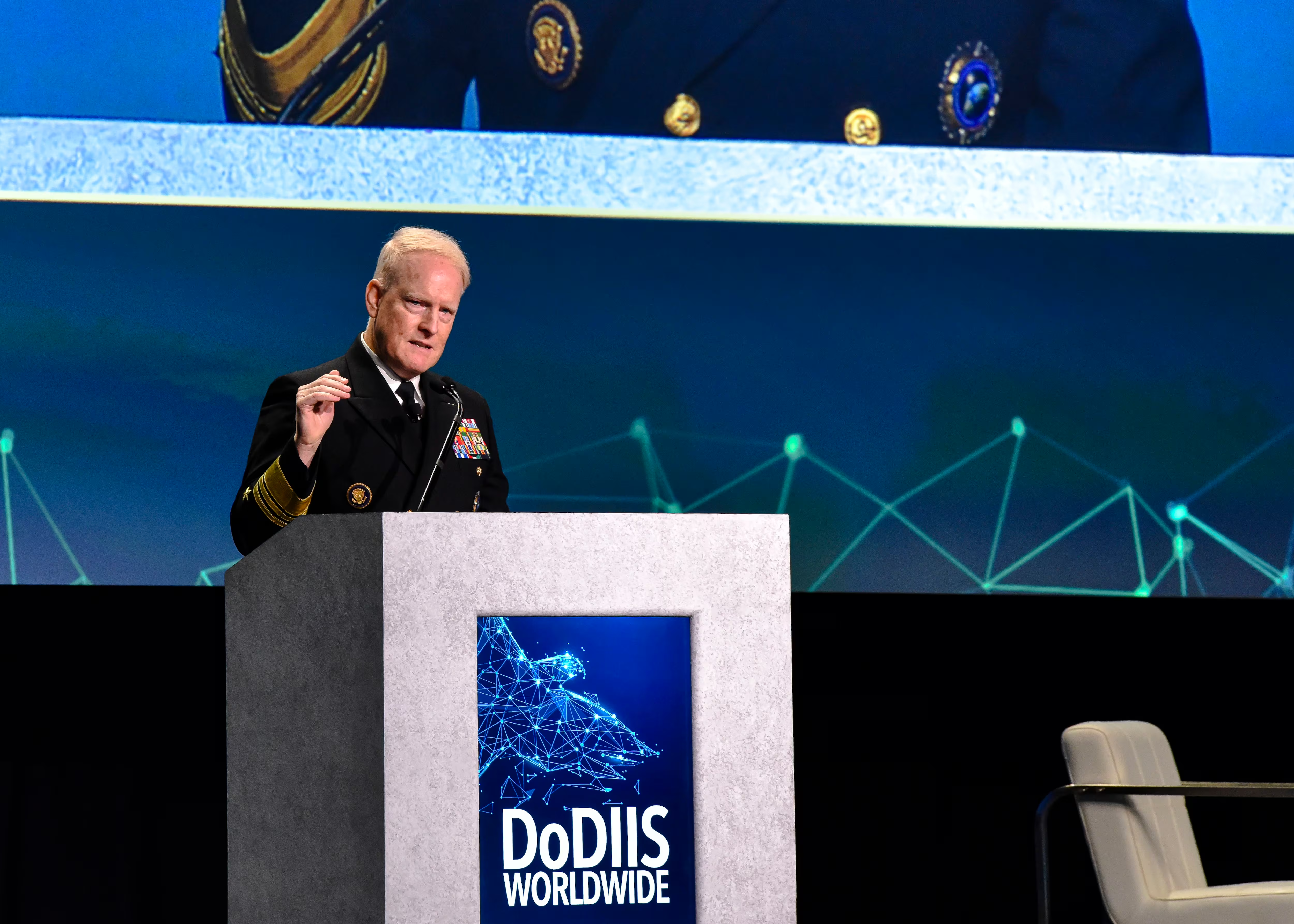ABERDEEN PROVING GROUND, Md. — The Army is working with industry to help shape how it will use and buy satellite communications for forces to talk beyond line of sight.
The distributed nature of operations forces will likely be engaged in in the future requires flexible, resilient and robust communications where units will be disaggregated and need to talk over greater distances.
As the Army is looking at different satellite constellations to enable this, it is also trying to figure out what the best use and business cases are for owning or renting communications under a managed service model that could possibly replace the design of its logistics network called the sustainment tactical network.
The concept involves two areas, Col. Shane Taylor, project manager for tactical network at Program Executive Office Command, Control, Communications-Tactical (PEO C3T), told C4ISRNET in a Nov 2 interview. First, what would an architecture look like and how is the architecture — to include a mix of air time, network operations center management, terminals and how much of each — constructed.
Second is the business case and how the Army will price out its needs to industry providers. The Army released a request for information to industry last year to prod industry to help it better understand what types of services certain providers could offer and for how much.
“We don’t know what we don’t know,” Taylor said. “The team put together an RFI. We’ve gotten really good feedback, but there’s been definitely differences between the approaches and varying levels of partnering within industry, which is what we were hopeful to see.”
The Army asked industry up front to say what it can provide under what price point with no direct requirement, which was somewhat atypical from the prescriptive model used previously.
“I think part of what we’re learning today is how to compare apples to apples. A vendor will come in and say we can provide modem to modem for this cost. Quite frankly, I’m struggling today to be able to show that comparison to how we currently do it because that’s not how we currently are resourced,” Taylor said. “Vendors have been very good about coming up with different ways of do you pay by the megabyte, do you pay by duration. They are being very flexible in their different options. Where we’re working with them right now is making sure we can compare apples to apples based off how we currently are resourced.”
The 20 responses the Army received from industry ranged widely, from traditional defense companies to commercial providers with little experience with the military. Services varied by provider, with some companies offering top-to-bottom SATCOM integration that covered everything and others offering specific solutions that addressed just a portion of that chain.
“We’ve seen a very good variety of approaches, again, from some defense versus more commercial solutions,” Taylor said, adding the sheer volume and diversity of companies and offerings were a bit overwhelming and challenging at first.
The Army is also changing the way it does business in other ways. Instead of the Army formulating a use case and validating it through industry proposals, the service is asking industry to help develop use cases for how it could use SATCOM. Taylor noted that there have been some implementations industry has brought forth that the Army wasn’t expecting or anticipating.
The key is to also have flexibility and not get into a vendor lock situation, where the Army is stuck with one company instead of being able to leverage all of industry to improve its SATCOM capabilities.
“When you look at the multi-constellation, multi-path strategy, getting into vendor lock would definitely create some challenges from a flexibility standpoint going forward,” Taylor said.
The Army is still conducting meetings and demonstrations with companies. It expects to finish those demonstrations this year, then entering into the next phase in the following year. This could include a request for papers or another industry event based upon what the Army learned from its meetings with companies.
“It will take us a little while to digest all the information that we’re collecting during the current demos,” Taylor said, while Cook added that they’ll go back to industry regarding what the Army is thinking for future efforts.
Mark Pomerleau is a reporter for C4ISRNET, covering information warfare and cyberspace.








